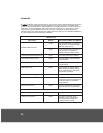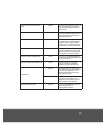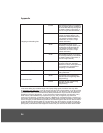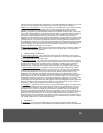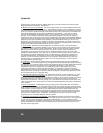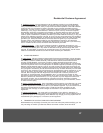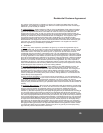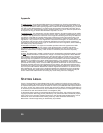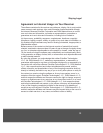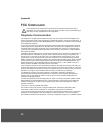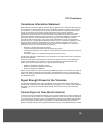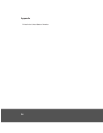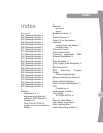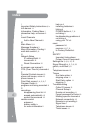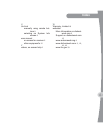
FCC Compliance
33
Compliance Information Statement
DISH Network Corporation, 9601 S. Meridian Blvd, Englewood, CO., (303) 723-1000, declares
that: This device complies with Part 15 of the FCC Rules. Operation is subject to the following
two conditions: (1) this device may not cause harmful interference, and (2) this device must
accept any interference received, including interference that may cause undesired
operation.This equipment has been tested and found to comply with the limits for a Class B
digital device, pursuant to Part 15 of the FCC Rules. These limits are designed to provide
reasonable protection against harmful interference in a residential installation. This equipment
generates, uses and can radiate radio frequency energy and, if not installed and used in
accordance with the instructions, may cause harmful interference to radio communications.
However, there is no guarantee that interference will not occur in a particular installation. If this
equipment does cause harmful interference to radio or television reception, which can be
determined by turning the equipment off and on, the user is encouraged to try to correct the
interference by one or more of the following measures:
• Reorient or relocate the receiving antenna.
• Increase the separation between the equipment and receiver.
• Connect the equipment into an outlet on a circuit different from that to which the receiver is
connected.
• Consult the dealer or an experienced radio/TV technician for help.
Do not make changes or modifications to this equipment. This could void the user’s authority to
operate the equipment.
There are many devices that allow you to connect your antenna to your in-home distribution
system such as splitters, and amplifiers. The FCC requires that the isolation between the
antenna port and the network port of your system meet the following:
• 80dB from 54 MHz to 216 MHz, at least
• 60dB from 216 MHz to 550 MHz and at least
• 55dB from 550 MHz to 806 MHz
Measuring the isolation of a device requires specialized equipment. In most cases, it is easier to
purchase a splitter or amplifier with the correctly specified isolation from your local television
retailer. The above requirements are extracted from 47CFR15.115. For the complete text please
visit WWW.FCC.GOV.
Signal Strength Present at the Television
The software-based attenuator within the satellite receiver will limit the signal present at your
television set to below the FCC signal strength limit of 75.6dBuV. If you choose not to enable the
attenuator, you must ensure that the signal strength present at the TV set does not exceed
75.6dBuV.
Connecting to an Over-the-Air Antenna
In order to receive local broadcast channels, you may wish to install an over-the-air antenna into
your over-the-air tuner module or TV distribution equipment. There are many devices that allow
you to connect your antenna to your in-home distribution system such as splitters and amplifiers.
You must be careful to meet certain FCC regulations with respect to the isolation between the
antenna port and the network port of your system. It is recommended that you purchase a
splitter or amplifier with the correctly specified isolation from your local satellite television retailer.



